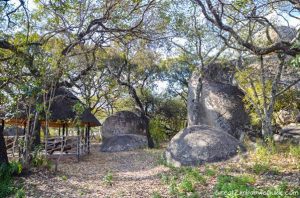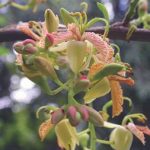TREE LIFE
October 2008
R.B. (Bob) Drummond
There will be a Memorial Service for the late R.B. (Bob) Drummond at the Christian Counselling Centre, 8 Coltman Road (off The Chase between Pendennis Road and Waller Avenue) on Saturday 22 November, 2008 at 10 a.m.
Tea will be served afterwards and it would be appreciated if you could bring a small plate of eats or a packet of biscuits.
Bob died at home in Harare on 3 June 2008 of heart failure at the age of 84. He leaves a widow, Joan, daughters, Jean and Janet and grandsons Gavin and Ryan, to whom we extend our sincere condolences.
Bob’s passing away leaves a huge gap in botanical knowledge throughout the region.
Contact: Hugh or Ginny de Robeck on 744508, 0912269502 (Hugh) 0912262470
(Ginny) or e-mail hderobeck@mango.zw
MASHONALAND CALENDAR

Haka Game Park. First posted by Great Zimbabwe Guide on 19 January, 2018 in category: Top things to do, Travel journal
19th October: Haka Game Park. No, this is not an error! The Society will be returning to Haka for the second month.
Mark is away and Bernard Beekes has kindly agreed to run one of his ‘Teach Yourself Trees’ outings.
Bernard will organize people into groups depending on attendance and will print and provide a Mashonaland tree list for each group. Everybody should bring whatever books and aids (especially a lens) they require.
Bring a packed lunch and a chair.
Advance Notice
All members of the Tree Society are invited to attend the 7th Natural History Symposium on Sunday 30th November 2008 (8 a.m. to 4 p.m.) at 51 Lawson Avenue, Milton Park, Harare (the premises of the Zimbabwe-German Society). This event is organized by the Aloe, Cactus and Succulent Society of Zimbabwe, and further details will be provided in the November issue of Tree Life.
MATABELELAND CALENDAR
Please contact Jean Wiley or Gill Short for details of the next Matabeleland function.
Deadly and Desirable
The coral tree is highly popular because of its flame coloured flowers, healing properties and ‘lucky bean’ seeds — but the seeds are also deadly poisonous. The botanical and common names are: Erythrina caffra (coast coral tree) and Erythrina lysistemon (sacred coral tree)
Let me tell you about something curious that once happened on a farm near Cradock in the Eastern Cape. Here lived twin daughters who spent most of their childhood in the large garden surrounding the farmhouse. Their favourite tree in the garden was a sturdy coral tree, eight metres tall.
Many of us are familiar with coral trees because they are popular garden trees and also line the streets of a number of Southern African towns — as does the African flame tree.
Both these trees have flame-coloured flowers and the twin girls would make garlands from the ones on their coral tree each spring. It was their special, magical tree because the nectar-filled flowers attracted the most beautiful sunbirds.
After the flowers came the fruits: bright, shiny red seeds with a hallmark black spot on each, encased in long, constricted, pea-like pods. The seeds are commonly known as ‘lucky beans’, but the term is loosely applied because several similar-looking seeds are also called lucky beans.
Coral tree seeds have an extremely hard coat which protects and preserves them. Seeds found in the Keurbooms region of the Southern Cape estimated to be 200 years old were still 99% capable of germinating.
The twins amassed vast collections of seeds from their coral tree over the years. One year they decided to make necklaces from them, though it took them quite some time to pierce each lucky bean and then string them together Finally the necklaces were completed and they proudly paraded them. So pleased were they with their handiwork that they wore them to bed that night.
The following morning one of the twins would not wake up when her sister came over to her bed. She was lying there, unable to move, with her lucky bean necklace slung across her mouth.
The twin narrowly escaped death that night so the story ends well, but no one could identify what it was that had threatened her life. It was only when a local botanist versed in traditional medicine saw the twins wearing their lucky bean necklaces that all became clear
“You must be very careful of those,” she said. “They can be deadly poisonous.”
“But we’ve swallowed them before and nothing happened. Like the time we played ‘Doctor Doctor’ and used the lucky beans as pills,” the twins explained.
“Ah yes, but that was because those beans were not pierced. You shouldn’t swallow lucky beans in any event, but if a seed is pierced or even cracked, it exposes its poison. This poison is so potent that it can cause paralysis or even death.”
What had happened is the afflicted twin had been sucking on her necklace as she lay asleep and the poison had entered her system.
“You are extremely lucky,” the botanist said, and went on to explain how important it is to know and understand the plants in your environment. “Some are wonderful for healing, others are both deadly and desirable.”
She described how the crushed leaves of the coral tree are applied to suppurating sores, how open wounds are treated with a powder made of the burnt bark, and how a decoction of the roots is applied to sprains.
“The red or ‘inflamed’ colour of the flowers signals the tree’s medicinal use,” she continued. “Sores, wounds and swellings all become inflamed and the flame must be extinguished before healing can begin. Fighting fire with fire, the coral tree is a wonderful natural healer in this regard.
“At the same time, we need to remember that all healing takes time. In traditional medicine, pain is respected as the body’s natural protection against further injury and as part of the healing process.”
As they grew older the twins never lost their sense of wonder for their special, magical tree, and started reading about the coral tree and many other local trees in Palgrave’s Trees of Southern Africa.
“What is a tree?” asks Palgrave. “A happy definition is that if you can sit in its shade, then it must be a tree.”
The coral tree is a magnificent member of the ‘order’ of trees and the twins have never forgotten it. They are adults now, but whenever they visit the farm, they always head for their coral tree and automatically start chanting, “Wonderful for healing. Deadly and desirable! Wonderful for healing. Deadly and desirable!”
Heather Dugmore
[Reprinted in the interests of science from the series ‘Bush Medicine’, Country Life, July 2008. And, alas, without the excellent photographs of Ben-Erik Van Wyk. –Ed.]


